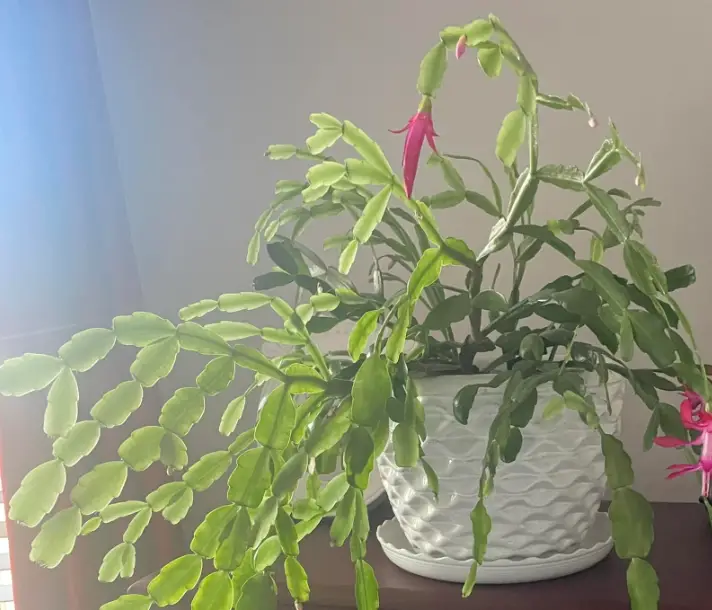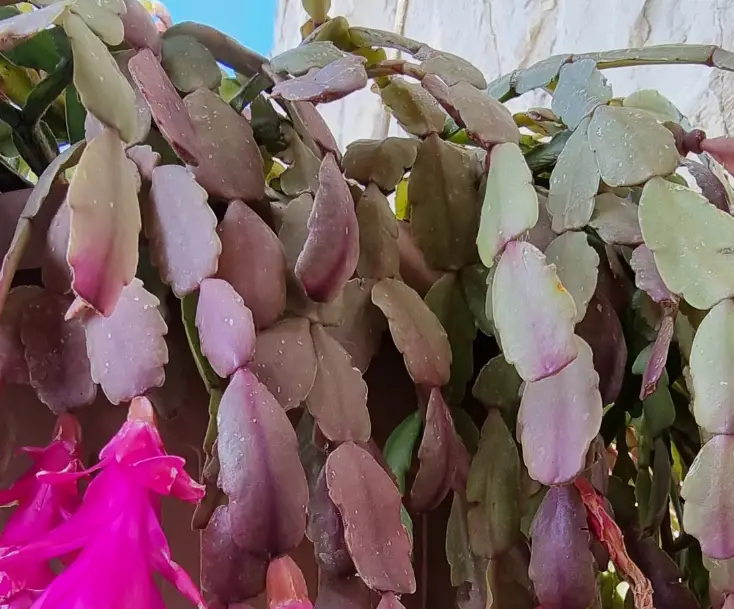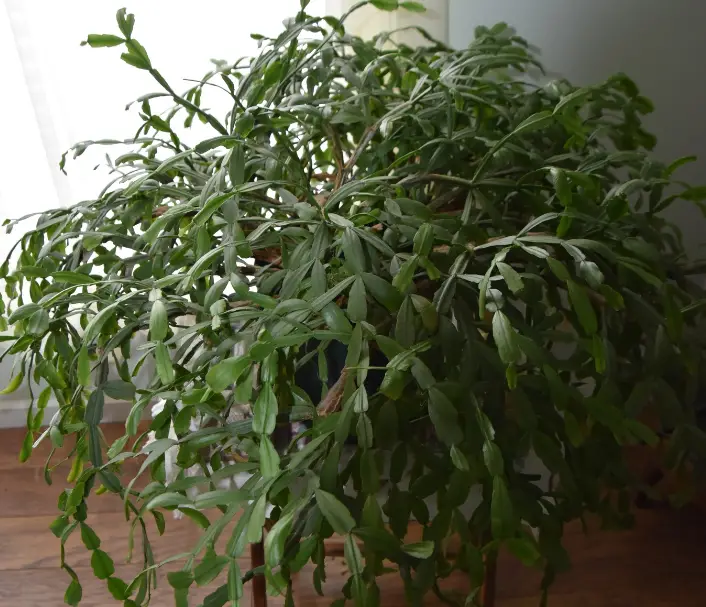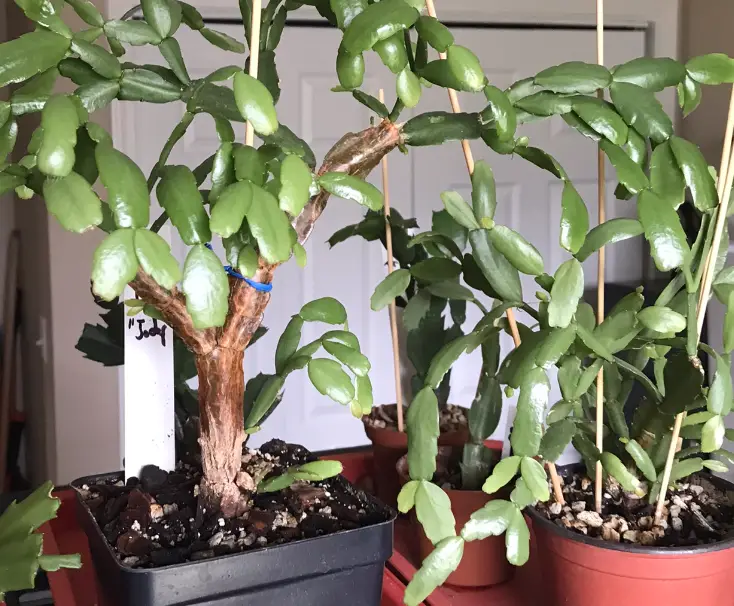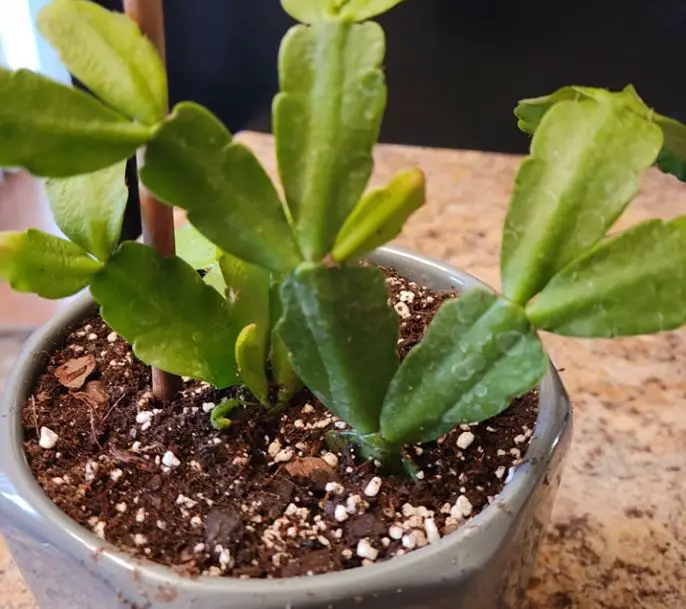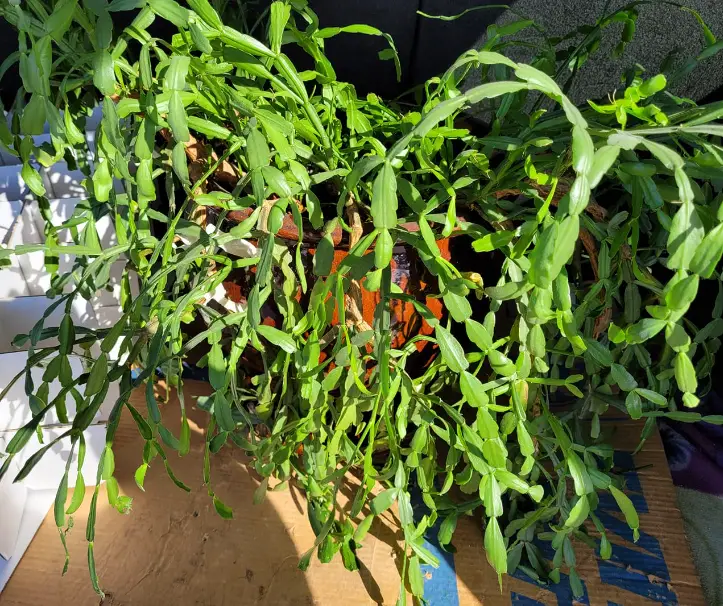Easter Cactus Leaves Wrinkled? Causes + Fixes
The Easter cactus is a popular houseplant known for its colorful blooms during the Easter holiday. Although a low-maintenance plant, several issues can impact its health and appearance.
One common problem is wrinkled leaves, a sign of stress from underwatering, overwatering, extreme temperature, nutrient deficiencies, and pests or diseases.
To address this problem, it’s important to identify the underlying cause and take the necessary steps to fix it. Otherwise, the plant may wilt and eventually die. However, you can grab a healthy live Easter cactus on Amazon for your spring holiday.
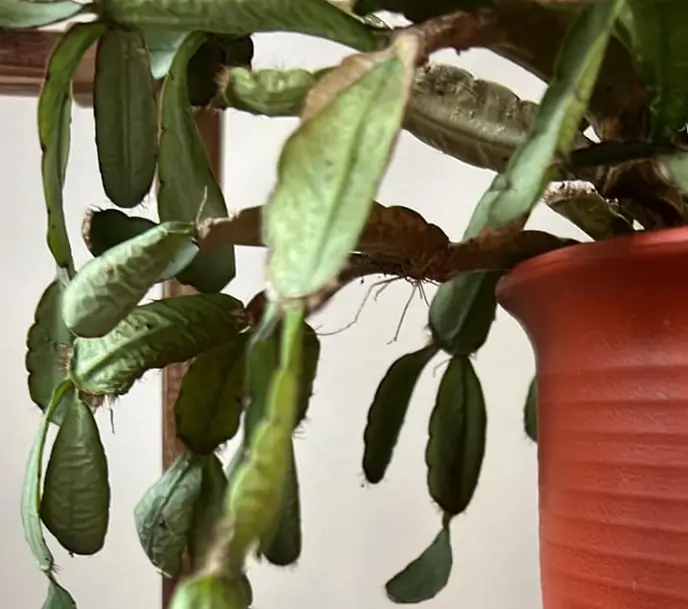
Wrinkled Easter Cactus Leaves – Reasons
Easter cacti are epiphytic plants native to Brazil’s tropical and sub-tropical rainforests. They enjoy humidity and nutrients from decomposing tree leaves and barks in their natural habitat.
Sometimes growing the cactus indoors without meeting their natural habitat conditions commonly results in unhealthy plants. The following are possible reasons why the leaves on your Easter cactus are getting wrinkled:
1. Inadequate watering
Underwatering is the primary cause of wilting and death of many houseplants. Water is a very important requirement for photosynthesis (food making). Leaves getting wrinkled, turning purple, or drooping is signs of insufficient water in the plant.
The Easter cactus needs adequate water throughout the year to remain healthy. However, you should not overwater the plant as it can result in root rot. Watering is only recommended when the top one inch of the soil feels dry to the touch.
How to Fix
If you did not water your Easter cactus as required and now its leaves are getting wrinkled, here is how to revive your underwatered plant:
- Using a spray bottle, start with a light watering by misting your cactus with room temperature water. In this state, too much watering will drown the cactus.
- Mist the plant again with room temperature water the next day, careful not to drench the soil completely.
- Wait three days and water the plant lightly once more. By now, the Easter cactus leaves should start recovering.
- After one week, your Easter cactus should be fully revived, and you can now resume the normal watering schedule. Remember to cut back on watering during winter.
2. Low humidity level
Dry air is another reason you might find Easter cactus leaves wrinkled. This plant likes a 50-60% humidity range at all times. Humidity levels are often down in dry climates. It can also be difficult to keep humidity levels high if you heat your home during winter.
How to Fix
You can increase humidity levels around your plants without a humidifier through the following tips:
- Mist your cactus once every two to three days using a spray bottle filled with room-temperature water
- Place your cactus on a pebble tray filled with room-temperature water. Just make sure the bottom of the pot is not in direct contact with the water.
- Use a humidifier, especially when a central heater constantly runs during winter.
3. Too much direct sunlight
The Easter cactus needs bright indirect sunlight to thrive and flower. Exposing this plant to direct sunlight will cause the leaves to lose moisture excessively and get wrinkled or scorched due to excess heat from the sun.
How to Fix
If you forgot your Easter cactus outdoors or on a window sill receiving direct sunlight and its leaves are now wrinkled, then you should do the following.
- Check if the soil has dried out and hydrate the plant by misting it with room temperature water in a spray bottle.
- Relocate the plant to a place that receives bright indirect sunlight. The east-facing window will be an ideal location.
- Keep monitoring the plant and mist it when the soil feels dry to the touch until it fully recovers from the effects of excess sunlight.
4. High Temperatures
The heat from skyrocketing temperatures can cause plants to lose excess moisture and appear wrinkled. Placing your cactus near heat vents or a fireplace will definitely cause this problem.
How to fix
Easter cactus prefers temperatures of 70 – 80 degrees Fahrenheit (21 – 27 degrees Celsius) during the day and 60 – 70 degrees Fahrenheit (15 – 21 degrees Celsius) at night. However, cooler temperatures are needed for the plant to bloom.
Keep the cactus cool away from direct sunlight, heat vents, and drafts. If heat is the problem, your plant will show recovery in a few days. However, cactus sunburn takes time to heal.
5. Pest or Diseases
Pests are conduits for diseases on a cactus. Mealybugs, aphids, spider mites, and fungus gnats are common pests on holiday cacti plants. As they sack the sap, they damage the plant and expose it to fungal or bacterial infections.
How to fix
Wrinkled leaves are one of the signs of insect pests on a plant. Inspect your Easter cactus for pests and take a step to save the plant. Use isopropyl alcohol on a cotton ball to get rid of mealybugs on the cactus or other visible pests.
Be sure to isolate the affected plant and remove any severely damaged parts. Improve hygiene and airflow around the plant to curb the problem of fungal infections.
Final Thought
An Easter cactus with wrinkled leaves can recover and thrive with proper care and attention. However, it’s important to identify the underlying cause and take steps to fix it. This may involve adjusting the watering schedule, ensuring the plant receives the right light and treating pests or diseases.
References:
- North Carolina Cooperative Extension: Schlumbergera gaertneri
- Arizona Cooperative Extension: Growing Easter Cactus
My name is Diane M Lewik, and I am the founder of this website. I am a degree holder in plant biology from the University of California – Berkeley. Over the years, I have cultivated a vast collection of succulents and I have learned a great deal about how to grow and care for these unique plants. Feel free to ask any questions in the comment section below.
